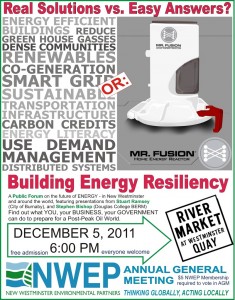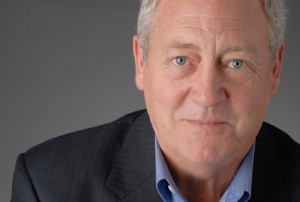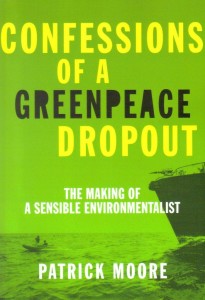I opened up my analogue version of the Walrus and on page 28, there is “Patrick Moore, Ph.D, Environmentalist and Greenpeace Co-Founder” staring back at me from a glossy full-page ad extolling the environmental responsibility of the Alberta tar sands. His most recent shill for the Canadian Association of Petroleum Producers got me thinking it has been a while since I picked up his book. My seemingly endless review continues.
After much of the history and basic philosophy is dispatched, Moore’s book becomes a rather disjointed discussion of various environmental topics, and his “sensible environmentalist” approach to these issues.
His discussion of Energy starts with a rather nonsensical statement:
Motion requires energy, so without energy, time would stand still. (pg. 204)
Which reminds me of the Calvin & Hobbes comic where Calvin thought time had stopped, but it turned out his watch battery had died, but I digress.
His rather lengthy dismissal of most sustainable energy sources can be summarized into a few points: they are untested, unreliable and would require huge government subsidies to compete with what we have.
In many ways these very expensive technologies [wind and solar energy] are destroying wealth as they drain public and private investment away from more affordable and reliable energy-generating systems. (pg. 221)
I’m not sure how putting money into sustainable infrastructure constitutes “destroying wealth”, in fact I’m not even sure what “destroying wealth” means. He mixes this with even sillier arguments: solar panels are made of aluminum, and that takes energy to produce! How sustainable is that?
This is mostly preamble to his long argument about the wonders of Nuclear Power. Before I get too deep into it, I need to point out that I am not a reflexively “anti-nuclear” environmentalist. I think nuclear energy probably has a role in responsible energy policy, if it can be done safely with appropriate accounting for its waste streams. Those are, admittedly, very big “if”s.
I remember my first experiences writing reports and proposals in my life as a Consultant working for a major engineering firm. After interpreting some data, I wrote something along the lines of “the source of pollutant X cannot be determined”. My boss chuckled when reviewing it, and said “in Engineering, we never tell the client something cannot be done. It can always be done. We just need to outline for them the costs related to doing it, and they can decide if it should be done.” I asked what we do if the request really is impossible, and he remarked something along the lines of “impossible just means the technology isn’t there yet. So we budget the cost of developing the required technology”. I came to learn this is how engineers think. Bless them, the sorry bastards they are.
But along those lines, I do believe nuclear energy can be made safe (it is already way safer than getting energy from oil or coal), it is a question of costs and developing the appropriate technology. At this point, we have to decide whether that is a good investment in our money, or if the alternatives make more sense for our investment dollars.
However, this is where Dr. Moore’s argument falls apart. There hasn’t been a new nuclear plant built in the United States in decades, but it isn’t due to no-nukes fear mongering or radiation risks or a lack of political desire as Dr. Moore suggests, but due to something much more banal: economics.
Simply put, Nuclear Plants are too expensive to buildand too expensive to maintain. Currently, there is no business model to produce nuclear power capacity. Without significant government subsidies, like the ones Moore decries for truly sustainable energy alternatives like wind, geothermal and solar, there would be no nuclear industry at all. The people holding nuclear plants back are not environmentalists, they are accountants.
You wouldn’t know this from reading Moore’s book. On page 217, he decries Germany for subsidizing solar energy production to the order of $3 Billion, then, 33 pages later and seemingly unaware of the irony, Moore is extolling President Obama for providing more than $50 Billion in subsidies to Nuclear power industries. I guess you can’t “destroy wealth” by nuking it.
This pales in comparison to his silly arguments around radiation risk. I have written extensively on the poor understanding in the popular media of radiation risk, mostly around the unfounded local concern about impacts of Fukushima. Moore did not have the benefit of writing after Fukushima, but his argument around radiation risk is so Homer Simpsonian in it’s idiocy (and remember, I basically agree with him on Nuclear energy), all I can do is quote it verbatim from page 240:
…fire can be used to Burn down a City and kill Thousands of people. Should we ban fire for cooking and heating? Car bombs are made with fertilizer, diesel oil, and a car. Should we ban those three rather useful things? Guns can be used for hunting and for defending one’s country or for committing genocide?
Unfortunately, his argument for salmon farming is no more nuanced.



